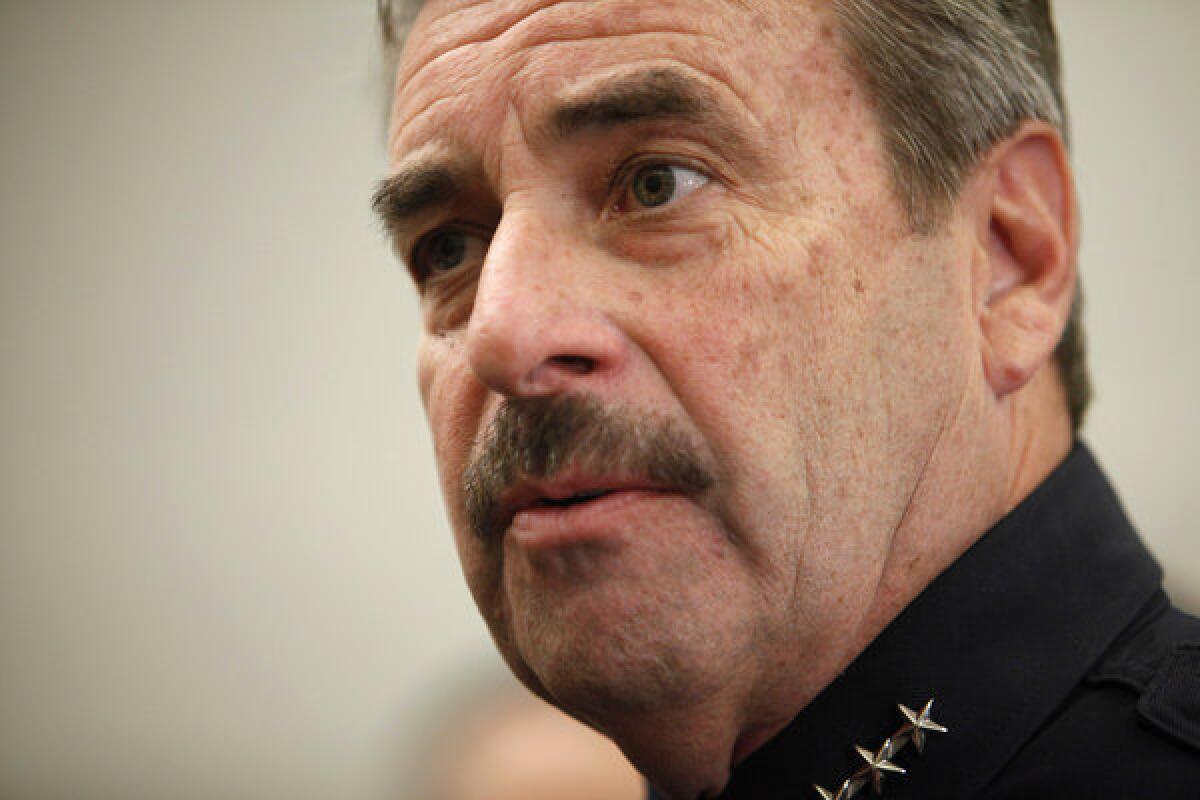Police Commission calls for public airing of LAPD tampering case

- Share via
The Los Angeles Police Commission on Tuesday called for a public hearing to question LAPD officials about patrol officers who tampered with voice recording equipment in patrol cars.
Commissioner Robert Saltzman said he wanted to hear from senior staff on how the case was handled and why top officials decided not to investigate which officers were responsible for the deception.
He said he also wanted an explanation for why the department failed to immediately notify the commission when the vandalized equipment was discovered.
At the commission’s weekly meeting, Saltzman emphasized the in-car video cameras are “a fundamental part” of efforts to guard against racial profiling by officers. The camera program helped convince federal authorities the department was capable of monitoring itself following years of close oversight by the Department of Justice, he said.
A judge’s decision last year to free the LAPD from the Department of Justice scrutiny was “made based on the clear and crucial understanding that this commission would provide the civilian oversight necessary to ensure…the Department engages in constitutional policing,” Saltzman said. “The commission’s ability to provide effective civilian oversight depends on the Department’s full and prompt communication with us regarding serious issues such as this one.”
In February, commission members were reviewing a shooting involving officers and noticed recordings of several officers’ voices were marred by gaps and unintelligible sections. After inquiring about the poor quality, they learned the problem was more widespread than the one incident.
Several months earlier, an inspection by LAPD investigators had found about half of the estimated 80 cars in one South L.A. patrol division were missing small antennas that help capture what officers say in the field. The antennas in at least 10 more cars in nearby divisions had also been removed.
When the missing antennas were discovered, Chief Charlie Beck and other top officials chose not to investigate which officers were responsible. Rather, the officials issued warnings against continued meddling and put checks in place to account for antennas at the start and end of each patrol shift, said Cmdr. Andrew Smith, a spokesman for the department.
The in-car cameras, which turn on automatically whenever an officer activates the car’s emergency lights and sirens or can be activated manually, are used to record traffic stops and other encounters that occur in front of the vehicle. Officers also wear small transmitters on their belts that relay their voices back to the antennas in the patrol car. Regardless of whether they are in front of the camera, officers’ voices can be recorded hundreds of yards away from the car, said Sgt. Dan Gomez, a department expert on the recording devices.
The distance an officer can roam and still be recorded depends on what buildings and other objects are interfering with the signal. Removing an antenna does not render the voice recorder useless but cuts its range by as much as a third, Gomez said, citing information from the manufacturer.
Most of the antennas were removed from cars in the Southeast Division, which covers Watts, Jordan Downs and Nickerson Gardens, where relations between police and minority communities have historically been marred by mistrust and claims of officer abuse. The in-car video cameras have been touted as a powerful deterrent to police misconduct and a tool for defending officers against false accusations.
In his comments, Saltzman said he wanted the hearing in order to clarify how the problem with the antennas came to light and whether department officials disclosed the problem to the commission’s independent investigative arm, the Office of the Inspector General. The question is “significant because it relates directly to our ability to provide effective civilian oversight of the Department,” Saltzman said.
Smith acknowledged to The Times that police officials did not alert Bustamante to the missing antennas.
Following Saltzman’s comments, Beck and the commission’s president, Steve Soboroff, attempted to downplay the question of when and how the department notified its civilian oversight board of the equipment tampering. They emphasized that in September, shortly after Soboroff had been appointed to the commission, Beck told him about the antennas in a private meeting. Believing the department had dealt with the issue, Soboroff said he did not mention it to other commissioners.
The issue resurfaced in recent weeks when a follow-up audit by the department found more problems with the video equipment in the Southeast Division. Dozens of the transmitters worn by officers were found to be unusable because small antennas on them were either missing or broken, the audit found. The department has opened an investigation into whether officers intentionally sabotaged the devices.
Twitter: @joelrubin
More to Read
Sign up for Essential California
The most important California stories and recommendations in your inbox every morning.
You may occasionally receive promotional content from the Los Angeles Times.











